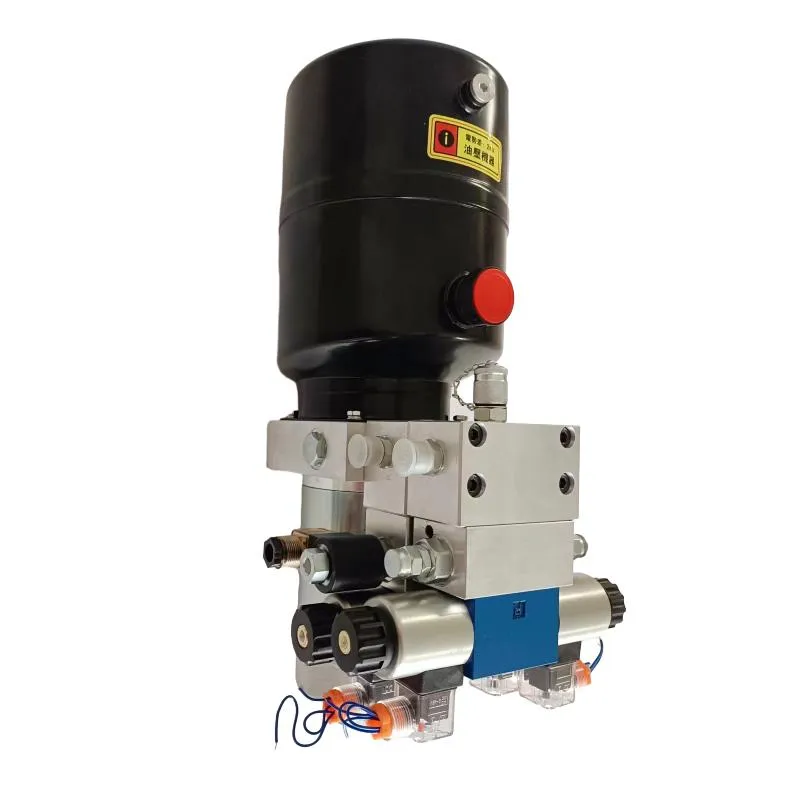Dec . 16, 2024 13:10 Back to list
Hydraulic Power Unit for Car Lifts Efficient Performance and Enhanced Reliability
Understanding Hydraulic Power Units for Car Lifts A Comprehensive Overview
In the automotive industry, efficiency and reliability are crucial for maintaining operations, particularly in vehicle repair and maintenance. One of the key components that contribute to this effectiveness is the hydraulic power unit (HPU), specifically designed for car lifts. This article delves into what hydraulic power units are, their components, functionality, and why they are vital in car lifting applications.
What is a Hydraulic Power Unit?
A hydraulic power unit is a self-contained assembly that provides the hydraulic fluid necessary to power hydraulic machinery. In the context of car lifts, it generates the necessary force to lift heavy vehicles, allowing mechanics and technicians to perform repairs and maintenance with ease and safety. The overall design typically includes a hydraulic pump, motor, reservoir, and various control mechanisms that work in harmony to produce the required hydraulic pressure.
Components of a Hydraulic Power Unit
1. Hydraulic Pump The heart of the HPU, the hydraulic pump converts mechanical energy into hydraulic energy by moving fluid from the reservoir into the hydraulic circuit. There are various types of pumps, such as gear pumps and piston pumps, each suited for different applications based on efficiency and flow rate.
2. Electric Motor This component drives the hydraulic pump. It may run on AC or DC power, depending on the application and power requirements. The motor size and type can significantly influence the unit's performance, which is why selecting the right motor is vital for efficiency.
3. Reservoir The reservoir holds the hydraulic fluid, typically oil, that circulates within the system. It also serves as a place for the fluid to cool off and allows for settling of any contaminants, ensuring a clean operating environment.
4. Valves Control valves are crucial as they regulate the flow and pressure of hydraulic fluid. Different types of valves may be used, including relief valves, which protect the system from excessive pressure, and directional control valves, which manage the movement of the lift.
5. Filters To maintain the integrity and longevity of the hydraulic system, filters are employed to remove impurities from the hydraulic fluid, preventing wear and damage to components.
car lift hydraulic power unit product

How Hydraulic Power Units Work
When the car lift is engaged, the electric motor activates the hydraulic pump, pulling fluid from the reservoir and pushing it through the hydraulic lines. As the fluid travels, it enters the hydraulic cylinders of the car lift, causing the cylinders to extend. This extension lifts the vehicle off the ground.
The pressure generated within the system can be adjusted via control valves, allowing for precise control over the lifting process. Once maintenance is completed, the process can be reversed; fluid returns to the reservoir, and the car lift lowers the vehicle safely back to the ground.
Why Are Hydraulic Power Units Important in Car Lifts?
Hydraulic power units provide several advantages that are critical in car lifting applications
1. Efficiency They allow for rapid lifting and lowering of vehicles, saving valuable time in repair facilities.
2. Safety With built-in safety features like pressure relief valves, HPUs minimize the risks associated with lifting heavy loads, ensuring that vehicles remain securely elevated while being worked on.
3. Durability Designed to handle significant loads over extended periods, hydraulic power units are built for longevity, reducing the need for frequent replacements or repairs.
4. Versatility HPUs can be referenced in various applications beyond car lifts, including industrial machinery and construction equipment, making them a versatile choice for many industries.
Conclusion
In conclusion, hydraulic power units are pivotal in the automotive service industry, making tasks that involve lifting vehicles efficient, safe, and manageable. Understanding the components and workings of these units can help businesses choose the right equipment and maintain their operational integrity, ultimately leading to a more productive and reliable service environment. Investing in a quality hydraulic power unit is not just about lifting cars; it's about enhancing the overall efficiency and safety of automotive operations.
-
Fork Lift Power Units - Hebei Shenghan | Efficiency, Reliability
NewsJul.13,2025
-
1.5-Ton Turbocharged Cylinder-Hebei Shenghan|Hydraulic Solution,Energy Efficiency
NewsJul.13,2025
-
Auto Hoist Power Units-Hebei Shenghan|Efficiency&Industrial Lifting
NewsJul.13,2025
-
Double Acting Power Units-Hebei Shenghan|Hydraulic Solutions,Industrial Efficiency
NewsJul.13,2025
-
1.5 Ton Lifting Cylinder 70/82-40-290-535 - High-Performance Hydraulic Solution | Hebei Shenghan
NewsJul.13,2025
-
Fork Lift Power Units - Hebei Shenghan | Efficiency&Reliability
NewsJul.13,2025
